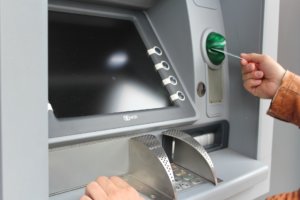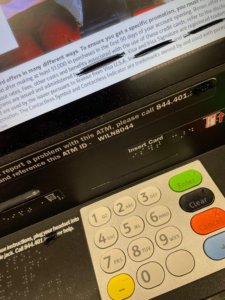
Image by Peggy und Marco Lachmann-Anke from Pixabay
It finally happened.
After 48 years of life, about 35 of them with a debit card, I finally got stiffed by an ATM machine. The ATM took my money.
It happened at O’Hare International Airport, at an ATM owned by a major national bank.
I asked to withdraw $300, and I received an odd combination of bills: one $100 bill and ten $10 bills. For those readers who don’t like math, that’s only $200.
Now I know that one bank – PNC Bank – began allowing customers to choose their own bills at their ATMs, but this wasn’t one of those machines. I figured the randomness of the bills might help my case.
I had always wondered what I would do in this situation. Then it suddenly occurred to me that there was absolutely nothing I could do at all. Who was going to believe me? How would I show any proof? This experience of helplessness did not leave me with good feelings about this bank.
The only thing I could think of was to wave the bills in front of the ATM’s camera, in case someone was watching. It turns out they weren’t.
Then I noticed a sign on the machine: “To report a problem with this ATM, please call…” Surely if I just called and explained the situation to someone, they could make this right – right?

The ATM has a sign indicating a phone number to report a problem, but that only works if you are a customer of the ATM’s bank.
“Thank you for visiting a [Name of Bank] ATM. If your card was not issued by [Name of Bank] and you did not receive your cash, or the machine took your card, please hang up and dial the company that issued your card for assistance.”
So the “report a problem” hotline is only for customers of that ATM’s bank. Figures. (This should not be the case, but if that is the bank’s policy, it should be clearly displayed on the ATM to prevent unnecessary calls.)
I’ve had other experiences with banks that didn’t understand their ecosystem and how it affects customers, but this idea that the ATM took my money was a new one for me.
I called my bank and filed a dispute.
A few weeks later, I received a letter in the mail stating that my dispute had been resolved and my case was being closed because the ATM’s bank provided “proof” that it had dispensed the correct amount. This “proof” was a ledger of some sort, printed on what looked like a dot-matrix printer, saying that a certain transaction on a certain date and time concluded with $300 being dispensed.
I called my bank and politely explained that while the machine may have thought it dispensed $300, it didn’t. This is where the strange combination of bills came into play; perhaps the machine thought it dispensed ten $20 bills when in fact they were $10 bills?
And let’s be honest – if the next customer received $300 instead of $200 (because they got my $20s), are they really going to call and complain?
I made one final plea to my bank, mentioning that I had been a customer for 25 years and that losing me over a $100 dispute probably wasn’t wise. I also noted that if I was trying to deceive them, I probably would have picked a number bigger than $100 (just saying).
To date, this dispute remains unresolved. Honestly, I don’t expect my $100 back. It’s stuck in a “black hole” of the banking system – a no man’s land that will never be discovered.
What went wrong here?

Dan Gingiss speaks to an audience full of salespeople about customer experience. To book Dan for your next event, please call (508) BOOK-DAN (266-5326) or email Dan at dan@dangingiss.com
First, the ATM’s bank needs to take responsibility for its own machinery. Even though don’t have an account with that bank, when I use their ATM I pay a fee to them so I still should be considered a “customer.”
Second, my bank needs to go to bat for me precisely because I’m their customer. It’s not their fault that the ATM stiffed me, but it is their problem, and I expect them to fix that problem for me.
The bottom line: When your business depends on other entities, the customer experience is still your responsibility even if it’s the other entity that messes something up. A company’s ecosystem may include many other businesses, but for each one that touches your customer, it’s as if you are conducting the transaction.
Don’t deflect when there’s a problem; own it and make it right.
